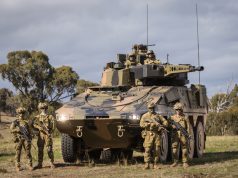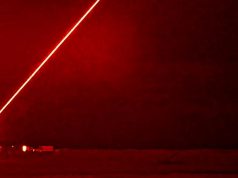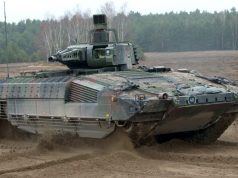German defense technology company Rheinmetall says it has completed a trial of a laser weapon technology demonstrator built on behalf of the German Bundeswehr.
The first trials with the laser testbed were conducted at Rheinmetall’s proving ground in Unterlüß as part of a counter-unmanned aircraft system (C-UAS) campaign.
The laser testbed will not only serve as a technology demonstrator, but also as the basis for future research and development work at Unterlüß in Lower Saxony, the company said.
It is designed so that all components of a future laser weapon system can be examined modularly. Every interface to the sensors – the radar, for example – or to the energy supply and laser source are “open” designs. This makes it possible to test every conceivable combination iteratively and then to compare the results.
The objective of current studies is to produce a suitable configuration for a mobile technology demonstrator with a laser output of over 10 kW that is set to be integrated into a Boxer fighting vehicle by the end of 2022.
At present, the laser testbed consists entirely of subassemblies made by Rheinmetall. But open interface architecture makes it possible to integrate and test components from other manufacturers also.
The laser testbed consists of a 20-foot container divided into three compartments: laser, operator and infrastructure. Encompassing five 2 kW-fibre laser modules, the laser source is installed in the laser compartment.
Rheinmetall added that the individual laser modules use spectral coupling to achieve a total output of 10 kW.
Rough orientation of the laser weapon station is based on data from the suite of electro-optical sensors in the weapon station. For fine tracking, the reflection of the target irradiated by the illumination laser is evaluated in the beam guidance system and transformed into corresponding guidance signals for tracking the target. Furthermore, under conditions of functional safety, all subassemblies necessary for target engagement, e.g., beam status monitoring and target point control, were achieved for the first time within the optical beam path.
During the C-UAS campaign conducted in Unterlüß, a variety of drone types were optically tracked and neutralized at ranges of up to one kilometer, according to Rheinmetall.



























